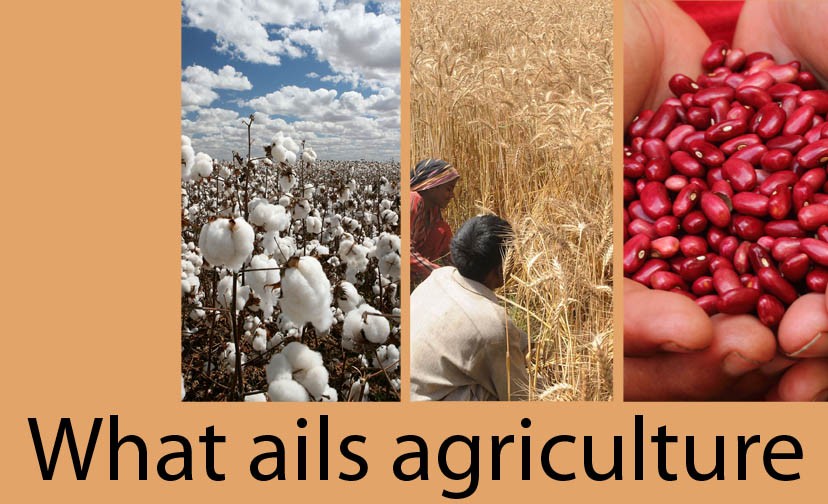
Focusing on the state of agriculture in Pakistan and the structural issues that need to be addressed

The government could not but concede that there has been a negative agriculture growth rate in the country in the last fiscal year. In his budget speech, the finance minister announced hefty agriculture development packages that aim to fix the negative growth. The amount of money and the kind of incentives offered indicate the government has found the diagnosis and it is trying to address it accordingly.
But is the government even aware of what ails the agriculture sector? Remember we are talking about a government that is known to have routinely ignored the farmers and let the situation come to this point. Analysts are pointing at the fact that the only reason the PML-N is now pushed to consider this as a problem is the last local government election in Punjab that brought independent corporate land owning class at the helm, and might prove politically costly for it in the next general election.
Whatever the compulsions for the government, the aim of this Special Report is to look at both the current state of agriculture as well as the structural issues that need to be addressed. To start with, what needs to be acknowledged is the number of people employed in the agriculture sector; even the conservative estimates put the figure at 40 per cent. Therefore, all governments must put this somewhere on the top of their list of priorities.
The government’s view that the negative growth rate owes itself to the extremely low cotton production which in turn is owed to the faulty seed is only a partial view of the problem. It discounts the impact of global warming on all agriculture products for which we in this country are not prepared.
The fluctuations come in the wake of low rainfall, rainfall at the wrong time, seed mutation and much else. This requires very careful water management plans and state of the art research in order to know how to mitigate and deal with the impacts of climate change.
Besides, as Dr Akmal Hussain points out, the government needs to focus on the huge number of farmers who cultivate less than 25 acres. What he proposes seems revolutionary -- turning the tenants into owners of land -- but this may well be doable. Muhammad Ali Jan hints at the problems in market management and how this area has been ignored over the years to the detriment of the farmers as well as agriculture itself.
Dr Hussain thinks if the structural problems are not removed, there is a possibility of famine. But the truth is that we already are experiencing extreme rural poverty, which is more pronounced in certain regions. One wonders if the development packages announced by the government will adequately address, among other things, the problem of distribution.